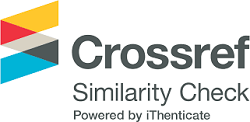Enhance WLEDs Performance with Additional Phosphor Materials in Multi-Layer Remote Structure
Abstract
One of the most important factors used to evaluate lighting performances of
WLEDs is the angular color uniformity (ACU). The triple-layer remote phosphor structure is considered as a proposed mechanism for elevating the ACU of a WLED. The analysis on the triple-layer structure's efficiency is specifically demonstrated in this article. Additionally, there are detailed comparisons between the triple-layer (TL) and the dual-layer (DL) geometries to reinforce the idea of using TL packaging for WLED optical enhancements. The WLEDs with average correlated color temperatures (ACCTs) of 6600 K and 7700 K are utilized for experiments. According to the outcomes, the attained color rendering index from DL design is higher than the one from TL package. However, the TL shows better color quality scale (CQS) than the DL, regardless of ACCTs. Besides, not only does the TL yield better CQS but also heighten the lumen efficiency. On top of that, the ACU of TL WLED model is much higher than that of the DL as a result of deviated correlated color temperature reduction at all ACCTs. This result is more obvious at the high ACCT of 7700 K, in other words, the ACU of a high-ACCT WLED shows more visible enhancement with TL structure. From these results, the triple-layer remote phosphor structure stands out as the promising advancement in the production of high-quality WLEDs.
This is an Open Access article distributed under the terms of the Creative Commons Attribution License (http://creativecommons.org/licenses/by/4.0/), which permits unrestricted use, distribution, and reproduction in any medium provided the original work is properly cited.
Keywords
Full Text:
PDFTime cited: 0
DOI: http://dx.doi.org/10.55579/jaec.202153.305
Refbacks
- There are currently no refbacks.
Copyright (c) 2021 Journal of Advanced Engineering and Computation

This work is licensed under a Creative Commons Attribution 4.0 International License.










